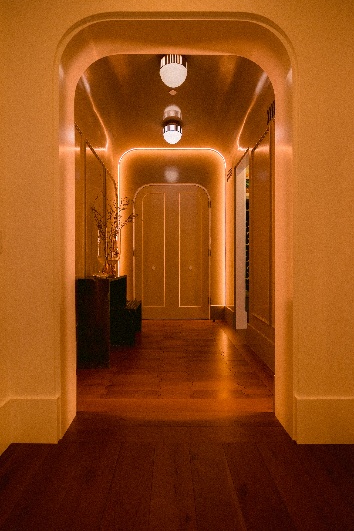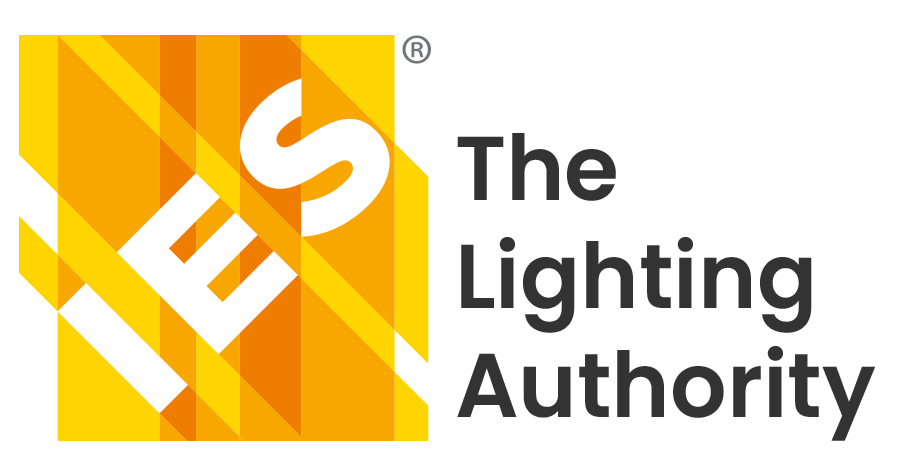Brought to you by PureEdge Lighting

The Science of Light and Life
Understanding Circadian Rhythms
Circadian rhythms are the body’s internal clock—a 24-hour cycle that regulates sleep, hormone release, eating habits, and even mood. This system is primarily influenced by light, particularly the natural progression of daylight. The white light of the mid-day sun (5500K-6500K) encourages activity and alertness, while the warm glow of the sunset (1500K-3000K) promotes relaxation and preparation for sleep.
Research has shown that disruptions to these rhythms—whether through irregular sleep patterns or exposure to artificial light at inappropriate times—can lead to chronic health issues such as sleep disorders, metabolic problems, and even mood disturbances. For lighting designers, this means that the way we illuminate our environments has profound implications for our overall well-being.
The Role of Dynamic Lighting in Health
Dynamic lighting systems offer a transformative approach by mimicking the natural progression of sunlight. Instead of static, unchanging light levels, these systems adjust brightness and color temperature in real-time, aligning indoor lighting with our circadian needs. This synchronization with nature not only supports better sleep and improved mood but can also boost productivity and cognitive function during the day. The ability to tailor the spectral output of lighting systems to specific times of day is a game-changer in environments such as offices, schools, and healthcare facilities where the quality of light is directly linked to performance and health.

Dynamic Lighting: Designing with Nature in Mind
Tailoring the Light Spectrum
The key to dynamic lighting is its spectral flexibility. Traditional lighting solutions often rely on fixed-spectrum bulbs that do not change with the time of day. In contrast, circadian lighting systems are designed to modulate their spectral output, providing a range of color temperatures that emulate natural sunlight.
For designers, this approach involves a deep understanding of spectral power distributions (SPD) and the impact of different wavelengths on human physiology. By carefully selecting and programming light sources, designers can create environments that are not only visually appealing but also biologically supportive.
Integrating Dynamic Systems in Design
Successful implementation of circadian lighting requires an integrated design approach:
- Control Systems: Advanced control systems such as DMX or DALI allow for granular adjustments in light intensity and color temperature throughout the day. This integration can be automated based on time or adjusted manually to suit the specific needs of a space.
- Sensor Integration: Incorporating sensors that monitor ambient light, occupancy, and even biometric feedback can help fine-tune the lighting environment in real time, ensuring that the system always aligns with the occupants’ needs.
- Software and Scheduling: Customizable scheduling software enables designers to program lighting scenes that change dynamically, providing the right spectrum of light at the right time, all while ensuring energy efficiency.

RGBTW vs. RGBW: Expanding the Spectrum for Superior Wellness
A Closer Look at Lighting Technologies
Traditionally, many LED systems have utilized RGBW configurations—comprising red, green, blue, and a dedicated white LED—to produce a wide range of colors and add a layer of neutrality with white light. While RGBW systems have served the industry well, the evolution toward RGBTW (Red, Green, Blue, Tunable White) lighting represents a significant advancement in both performance and flexibility.
Why the “T” Matters:
The “T” in RGBTW stands for “Tunable White.” Unlike a static white LED that offers a fixed color temperature, tunable white provides both cool and warm white light. This additional degree of control is critical for Circadian applications, where the quality of white light can greatly impact physiological responses.
Advantages of RGBTW Lighting
- Enhanced Color Rendering: With tunable white channels, RGBTW systems can produce a broader and more accurate color gamut. This means that the light not only adapts to the time of day but also renders colors more naturally, which is particularly important in spaces where color selection is critical—such as galleries, retail, or healthcare environments.
- Optimized Circadian Performance: The ability to shift the white light from a cool daylight hue to a warm evening glow makes RGBTW systems inherently more aligned with Circadian principles. In the morning, cooler white light enhances alertness and productivity, while in the evening, warmer tones reduce blue light exposure, supporting the natural production of melatonin and preparing the body for rest.
- Increased Design Flexibility: For lighting designers, RGBTW systems provide the versatility to create a wide range of lighting scenes without sacrificing either aesthetics or function. Whether the goal is to highlight architectural features, set a specific mood, or optimize health and performance, the tunable white channels offer unparalleled control.
- Energy Efficiency and Integration: Dynamic, tunable systems can be more energy efficient because they adjust output based on actual needs rather than operating at a fixed intensity all day. This not only reduces energy consumption but also minimizes the potential for over-illumination, which can be a source of glare and discomfort.
Comparative Analysis: Tunable White vs. RGBW vs. RGBTW
| Feature | Tunable White | RGBW | RGBTW |
|---|---|---|---|
| White Light Control | Good range of cool to warm white light | Fixed white LED with a set color temperature | Tunable white LEDs offering a range from cool to warm together with RGB LEDs allow for best recreation of sun light conforming to the Black Body Curve |
| Color Rendering | Limited to cool and warm white light temperatures | Good for basic applications | Superior color rendering with a broader spectrum |
| Circadian Alignment | Good for Circadian needs | Limited due to static white channel | Fully customizable for Circadian needs |
| Design Flexibility | Good for varied white light scenes | Limited to pre-defined white light output | Greater flexibility in creating dynamic scenes |
| Energy Efficiency | Most efficient | Standard energy performance | Enhanced efficiency through dynamic adjustments |
This table illustrates that while Tunable White and RGBW systems provide a solid foundation for many applications, RGBTW lighting represents the next step in creating environments that are not only visually engaging but also supportive of human health.

Pure Smart™ TruColor™ technology uses five-channels of tunable LEDs (red, blue, green, warm white, and cool white). PureEdge Lighting’s proprietary color mixing produces one of the widest, most accurate spectrums available from 1500K-6500K, offering tunable white with all the vibrancy of colors from sunrise to sunset. It provides a CRI of 94 and DUV of +-.004 in relation to the black body curve at any point on the spectrum of tunable white CCT.

Practical Applications and Design Considerations
Implementing RGBTW in Various Environments
Workplaces:
Offices benefit from dynamic lighting that adjusts to the natural workday. In the morning, cooler white light can boost alertness, while in the late afternoon, a shift towards warmer hues can help employees unwind, leading to reduced stress and improved overall productivity.
Healthcare Facilities:
Hospitals and clinics are increasingly adopting circadian lighting to enhance patient recovery and staff performance. For patients, exposure to appropriate light spectra can regulate sleep cycles, reduce delirium, and even improve mood. For healthcare workers, the right lighting environment can mitigate the effects of shift work, which is known to disrupt circadian rhythms.
Hospitality and Retail:
In spaces like hotels and retail stores, the ability to create dynamic lighting environments adds an extra layer of ambiance. By utilizing RGBTW systems, designers can craft experiences that not only captivate the senses but also subtly influence the mood and behavior of guests and customers.
Educational Institutions:
Classrooms and study areas that mimic natural daylight conditions can enhance concentration and learning outcomes. By adjusting the lighting to reflect the natural progression of the day, educators can help students maintain optimal alertness and reduce eye strain.
Technical and Aesthetic Integration
When incorporating dynamic circadian lighting into your designs, consider the following best practices:
- Spectral Tuning: Ensure that the lighting system can accurately reproduce the desired spectrum at each phase of the day. While manufacturers will use expensive spectrometers to calibrate the lights, inexpensive mobile apps such as LightSpectrum Pro are available for lighting designers to measure and dial in the settings for their designs.
- User Control: While automation is a key benefit, providing occupants with the ability to manually override or adjust lighting scenes can enhance user satisfaction and accommodate individual preferences.
- Aesthetic Consistency: Dynamic lighting should enhance, not detract from, the overall design concept. Work closely with architects and interior designers to ensure that the transition between different lighting scenes is seamless and aesthetically coherent.
- Integration with Building Systems: Modern buildings are often equipped with smart systems that manage HVAC, security, and energy usage. Integrating circadian lighting controls with these systems can lead to a more holistic building management strategy, optimizing energy usage and improving occupant comfort.

Looking to the Future: Trends in Circadian Lighting
As the demand for healthier indoor environments grows, so does the technology behind circadian lighting. Future trends include:
- Artificial Intelligence and Machine Learning: Advanced algorithms can predict and adjust lighting based on user behavior, environmental sensors, and even weather patterns, ensuring that the lighting environment is always optimal.
- Personalized Lighting Solutions: Imagine a workspace where each employee’s lighting environment is tailored to their specific circadian rhythm. Emerging technologies and medical studies are exploring the feasibility of personalized lighting, which could revolutionize how we think about indoor environments.
- Expanded Spectrum Capabilities: Ongoing research in LED technology may soon allow for even more nuanced control over spectral output, further refining the relationship between light and human biology.
- Sustainability: As energy efficiency remains a critical consideration, dynamic circadian lighting systems are likely to become even more energy-efficient, integrating renewable energy sources and smart grid technology to minimize environmental impact.
Conclusion
For lighting designers, the fusion of science and art in circadian lighting represents a profound opportunity to enhance human well-being. By dynamically adjusting lighting to mirror natural daylight and leveraging the superior capabilities of RGBTW systems, designers can create environments that not only dazzle the eye but also support health and wellness. As we move toward a future where the built environment is as attuned to our biology as it is to our aesthetics, embracing these technologies is not just an option—it’s an imperative.
The next time you step into a space bathed in light that seems to change and breathe with the rhythm of the day, consider the innovation behind it. With RGBTW lighting and circadian principles at the helm, we are truly lighting the way to a healthier, more vibrant future.
For more information visit: https://www.pureedgelighting.com/puresmart/trucolor_rgbtw
TL;DR For lighting professionals looking to push the boundaries of design, the integration of circadian lighting with advanced systems like Pure Smart™ TruColor™ RGBTW is a call to innovate, experiment, and ultimately, to design spaces that nurture both body and soul.
